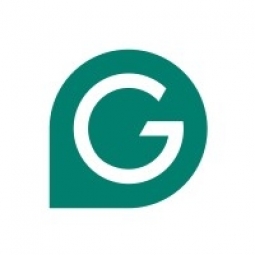Technology Category
- Functional Applications - Enterprise Resource Planning Systems (ERP)
Applicable Industries
- Cement
- National Security & Defense
Applicable Functions
- Sales & Marketing
Use Cases
- Speech Recognition
- Tamper Detection
About The Customer
HackerOne is a San Francisco-based company that was started by hackers and security leaders driven by a passion for making the internet safer. The platform enables companies to work together with the hacker community to mitigate cyber risk by identifying and reporting security vulnerabilities before they can be exploited. HackerOne customers range from leading consumer brands such as Starbucks and Nintendo to tech giants such as Twitter and PayPal to government entities such as the US Department of Defense. To date, HackerOne has worked with hackers from over 150 countries across the globe to find nearly 250,000 valid vulnerabilities in customer systems.
The Challenge
HackerOne, a platform that enables companies to work with the hacker community to identify and report security vulnerabilities, faced a unique challenge. The company had to cater to two distinct audiences - the hacker community and enterprise businesses. The challenge was to build relationships with senior executives to convey value at public and private organizations while also appealing to hackers around the globe, enticing them to participate in the community, grow their skills, and scan for bugs in customer assets. Both audiences were critical to HackerOne’s success. The company's brand voice had to balance the professionalism enterprise leaders expect while continuing to engage the hackers they rely on to power their platform. The HackerOne marketing team faced a twofold challenge: balancing the brand voice and bringing it to life consistently. They foresaw challenges when it set out to refresh the brand voice and update the website. With the need to manage a variety of team members and contractors, maintaining consistent quality of content and tone of voice in web pages, blogs, ebooks, and sales collateral was challenging.
The Solution
HackerOne recognized that achieving a nuanced brand tone would require continual coaching and a more integrated approach. While traditional style guides can help companies document and articulate their brand voice, they’re often difficult to follow, challenging to enforce, and used by few team members. Therefore, HackerOne decided to take a different approach. They aimed to put their best foot forward across every touchpoint and in every channel, regardless of the writer. This meant ensuring that the brand voice was consistent across web pages, blogs, ebooks, and sales collateral. The company also recognized the need to balance the professionalism expected by enterprise leaders with the more informal language that appeals to the hacker community. By doing so, they hoped to build trust with both audiences and ensure the success of their platform.
Operational Impact
Quantitative Benefit

Case Study missing?
Start adding your own!
Register with your work email and create a new case study profile for your business.
Related Case Studies.

Case Study
System 800xA at Indian Cement Plants
Chettinad Cement recognized that further efficiencies could be achieved in its cement manufacturing process. It looked to investing in comprehensive operational and control technologies to manage and derive productivity and energy efficiency gains from the assets on Line 2, their second plant in India.

Case Study
Data Capture for Afghanistan Forces
Electronic equipments on the field of Afghanistan provided information on the status of the vehicle and to identify potential threats surrounding it to the British Force. The monitoring and interpretation of this data requires robust and sophisticated digitization for data capture and communication.

Case Study
Digital Transformation of Atlanta Grout & Tile: An IoT Case Study
Atlanta Grout & Tile, a Tile, Stone & Grout restoration company based in Woodstock, Georgia, was facing challenges with its traditional business model. Despite steady growth over the years, the company was falling behind the web revolution and missing out on the opportunity to tap into a new consumer base. They were using independent software from different vendors for each of their department information and workforce management. This resulted in a lot of manual work on excel and the need to export/import data between different systems. This not only increased overhead costs but also slowed down their response to clients. The company also had to prepare numerous reports manually and lacked access to customer trends for effective business decision-making.
Case Study
Enhancing Security and Compliance in Remitly's Global Money Transfer Service with Fastly
Remitly, an online remittance service, was faced with the challenge of securing its proprietary global transfer network. The company needed a security solution that could meet PCI requirements and protect customers' sensitive transactions through its mobile application. The solution had to be capable of defending against new and emerging attack types without impacting performance. Remitly also had to deal with irregular traffic patterns, such as a sudden spike in account transfers from a small network segment on the Pacific coastline of South America. The company needed to determine in real time whether such traffic indicated an attack or valid requests. A traditional web application firewall (WAF) would not be able to distinguish this traffic, potentially leading to customer frustration if the IP was blacklisted.

Case Study
Major Aerospace Company Automates Asset Management
The O&M division of an aerospace and global security company was using spreadsheets to manually track more than 3,000 assets assigned to students and staff. Maintaining audit trails for this high volume of equipment became increasingly time-consuming and challenging. The chore involved knowing precisely what equipment was on hand, what had been issued, its location and the name of the custodial owner of each item. Every aspect of this task was carried owner of each item. Every aspect of this task was carried out by individuals with spreadsheets. Manually documenting the full lifecycle of each asset added to the burden. This included tracking maintenance requirements and records, incidents and damages, repairs, calibrations, depreciation, and end-of-life data.








